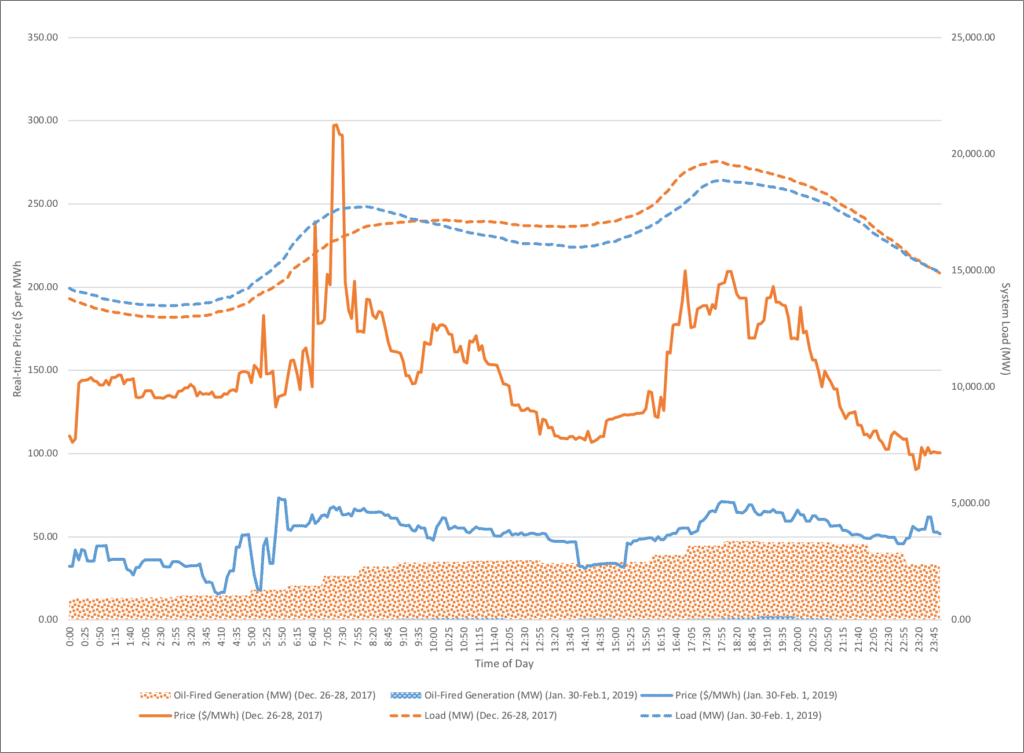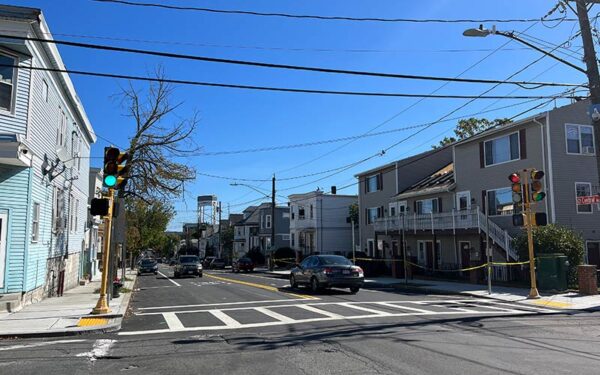
This winter's recent cold snap shows (again) that we don't need a new fracked gas pipeline. We have all the fuel we need while the region scales up its clean resources. Photo: EcoPhotography
Late last week, temperatures across New England plunged into the single digits for almost three days straight. Through the entire cold snap, our energy prices were at record lows, we didn’t resort to burning oil, and there was no hint of the “rolling blackouts” threatened by the fearmongering gas pipeline lobby.
What a difference a year makes.
During almost identical weather last winter, just after Christmas, the news was filled with urgent talk of spiking gas prices, constrained pipelines, and the region’s regrettable need to rely each winter on dirty oil-burning power plants to provide electricity.
So why was last week’s cold snap so different? Why were prices low and pipeline proponents silent?
It’s simple: during a few critical hours on those few frigid days, a relatively small amount of liquefied natural gas (LNG) was made available to the region from a tanker moored safely offshore, ten miles east of Boston Harbor. And having that extra fuel on hand, and only for the short time we needed it, made a huge difference. Even when temperatures hovered near zero last week, energy prices were low and stable across the region with no need to run New England’s old and dirty oil-burning power plants.
Maximizing our existing infrastructure like this – rather than building an expensive new fracked-gas pipeline (or paying hundreds of millions of dollars a year to prop up old fossil-fuel power plants) – is the solution to New England’s winter energy needs. It’s cheap, it’s already built and paid for, and it is standing by to deliver that small amount of additional gas we only sometimes need, and exactly when we need it. Most important, it’s temporary, something we’ll need only for another few years while New England continues to scale up its clean energy resources.
Moving Beyond All Fossil Fuels, Including Gas
For more than a decade, CLF has been advocating for an end to all fossil fuel use – including fracked gas – across New England. As recent reports from the UN’s Intergovernmental Panel on Climate Change and our own federal government show: to stabilize our climate and protect our way of life, we must be carbon-free by 2050.
That’s why CLF has for years led the fight to stop wasting public money on big new gas infrastructure and to start placing enforceable limits on gas-fired emissions. It is also why CLF is focused now on collaborative “deep decarbonization” planning – the nuts and bolts of how New Englanders can achieve our climate goals in a way that’s fair, cost-effective, and good for the economy.
Unsurprisingly, our efforts have been opposed by Big Gas and its pro-pipeline allies, notably ISO-New England (our regional grid operator) and the Boston Globe Editorial Board. Oblivious to climate impacts and the toll fracking has already taken on families across the U.S., this nefarious alliance continues to insist that the only way to keep the lights and heat on each winter is to sink five or six billion consumer dollars into a massive new pipeline that would slice across New England.
But last week proved them dead wrong.
Cost-Effectively Maximizing the Infrastructure We Already Have
About three and a half years ago, CLF published a short paper by one of the region’s foremost gas system experts describing how we could meet our winter energy needs without an expensive new gas pipeline. Its core conclusion? New England’s winter energy demand could be met at a low cost by maximizing the use of New England’s existing energy infrastructure.
Among the low-cost solutions we proposed: using New England’s existing offshore LNG terminals to enable “tailored deliverability” of relatively small amounts of gas if and when needed (at most, a handful of hours each winter). Doing so, our analysis showed, could save New Englanders on the order of $350 million each year when compared to building a big new 365-day-a-year pipeline to address a few days of deep winter chill. It would also free up billions of dollars for immediate investment in offshore wind and other clean energy resources that alone can deliver New England a healthy, clean future and a stable, livable climate.
Saving Money and Reducing Emissions
This winter, power generators ripped a page from our playbook and contracted for the shipment of some extra LNG into New England (from floating storage and regasification ships moored at the Northeast Gateway offshore import terminal). And since its arrival in early January, gas and electricity prices have been low and stable, including – importantly – during the recent spate of bitter cold.
To better quantify the effect, we compared prices and system performance last week (January 30 – February 1, 2019) with a three-day period last winter (December 26 – 28, 2017) that had an almost identical (if not slightly warmer) temperature profile, and almost the same average daily electricity demand.
The results were stunning.
Just after Christmas last winter (orange in the graph below), average wholesale energy prices skyrocketed as temperatures plummeted. For three days, electricity cost on average $150 per megawatt-hour, or five times more than normal. And because gas prices spiked, too, dirty oil-burning power plants ran almost continuously for days, providing between 20 and 30 percent of New England’s power.
But last week (blue in the graph below), during an almost identical period of frigid weather and electricity demand, things were radically different. With just a bit more LNG (a 5 to 10 percent increase) available at the right times, the price of electricity was stable and low, around $50 per megawatt-hour on average through the entire cold snap. And those oil-burning power plants? They barely ran at all, providing no more than about a tenth of a percent of New England’s electricity in the few hours a day they were turned on.
And here’s the best part: last week New Englanders look to have saved on average about $40 million – and avoided about 20,000 tons of carbon pollution – each day during the cold snap compared to our pricey post-Christmas oil-burn last winter.

Our Solution to Winter Cold Snaps Is Already in Place
Keeping the lights and heat on all winter in New England is serious business. Lives are at stake. But as we continue to bring renewables to scale, it is something we can handle – even in a deep freeze and even as we turn down our polluting power plants – with the smart, cost-effective use of our existing infrastructure.



